Several years ago, I embarked on an unforgettable six-week journey through France and Iceland. The experience was truly amazing, filled with sights and adventures I wish I could share in endless detail. However, I thought a more practical approach would be to discuss something invaluable I always bring on my travels: my herbal first aid kit. This essential Kit Travels with me everywhere, and while I maintain a basic, ready-to-go version, I customize it depending on the destination and length of each trip. Having my trusted herbal remedies on hand gives me peace of mind, allowing me to address minor health issues naturally without resorting to unfamiliar over-the-counter medications while abroad.
Crafting Your Personalized Travel First Aid Kit
The contents of your herbal travel first aid kit are deeply personal and should reflect your individual needs. Consider your typical health concerns, especially when traveling. Do you often experience digestive issues on the road? Struggle with sleep in new environments? Are you prone to pain or anxiety? Perhaps you’re heading to a sunny locale and need sunburn relief, or to an area with lots of insects. Reflect on the remedies you typically reach for at home and incorporate similar herbal solutions into your travel kit.
Another vital aspect to consider is the weight and size of your kit. If you’re driving, you have more flexibility to pack a wider array of herbs compared to flying or backpacking where space is limited. Exploring local herbal remedies in your destination can be a fun part of traveling. You might discover unique herbs and blends along the way. However, when you’re dealing with immediate issues like insomnia or an upset stomach, you’ll appreciate having familiar, reliable remedies readily available in your travel first aid kit.
Inside My Herbal Travel Kit: A Detailed Look
To give you a clearer picture and inspire your own kit creation, let’s explore the items I personally include in my herbal travel first aid kit.
Soothing Salves for Minor Injuries
I always pack two types of salves to handle minor cuts, scrapes, and bruises.
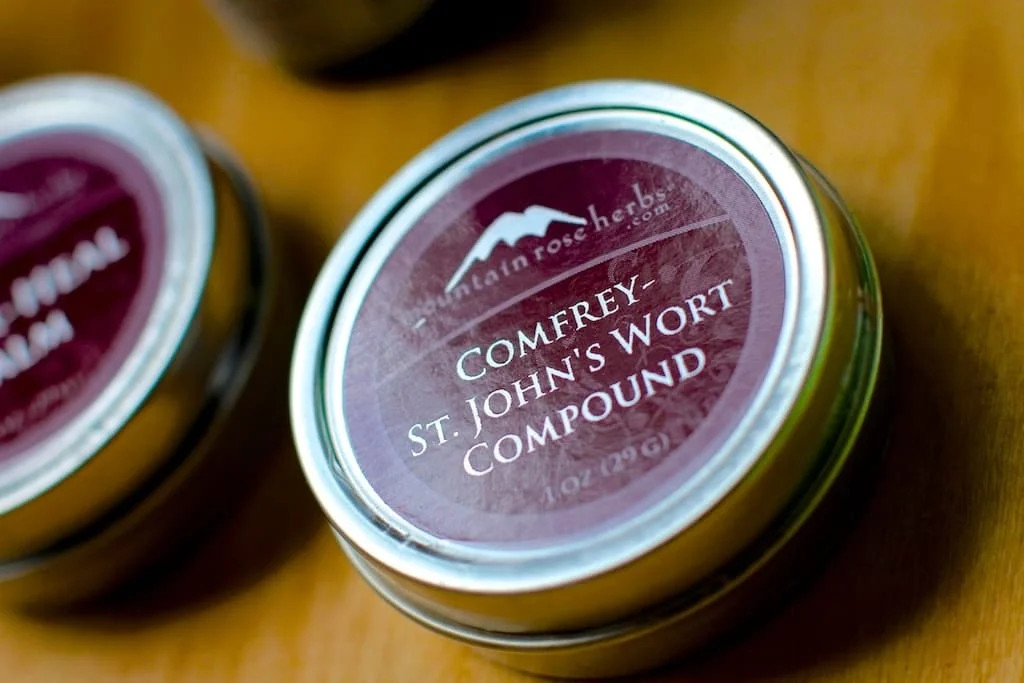 Herbal salve for minor scrapes in a tin container
Herbal salve for minor scrapes in a tin container
This first salve is my go-to for minor scrapes and cuts. It’s formulated to promote skin healing effectively, helping those little injuries disappear quickly.
 Arnica salve for bruises and sprains in a tin container
Arnica salve for bruises and sprains in a tin container
The second salve is specifically for bruises and sprains. It features Arnica, known for its ability to improve circulation by opening up capillaries. Enhanced circulation is crucial for healing bruises and minor sprains effectively. Arnica is a must-have in any travel first aid kit focused on natural remedies.
Natural Sleep Support for Travelers
Sleep disruption is a common complaint when traveling. Jet lag can be a significant issue on long-distance trips, like my journey to France. Even closer to home, the excitement of travel or simply sleeping in unfamiliar surroundings can interfere with your sleep cycle.
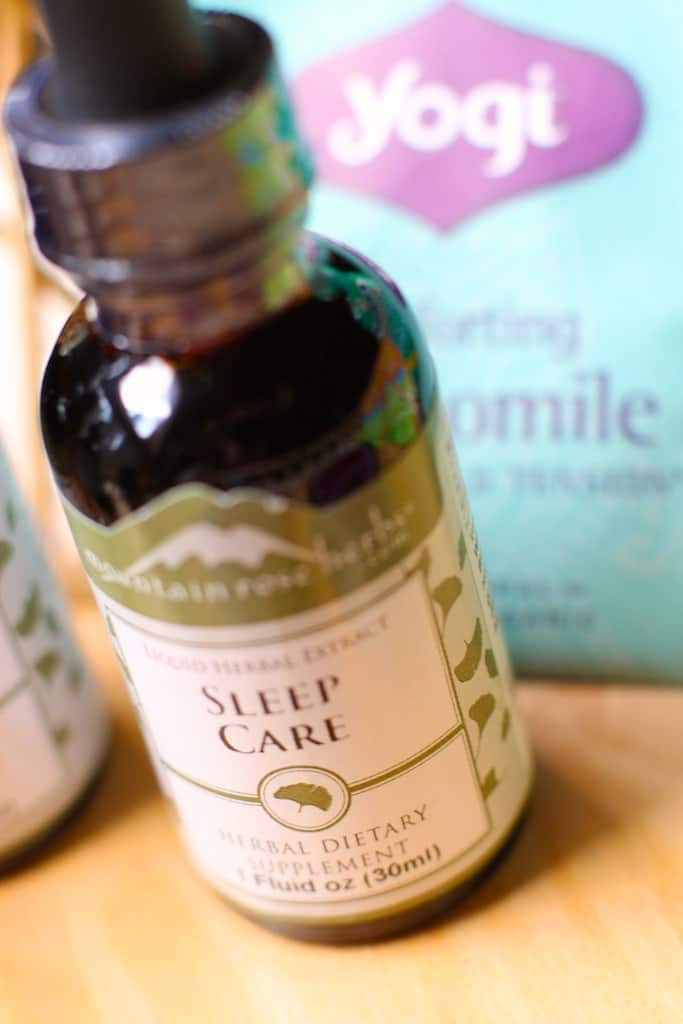 Sleep support tincture in a brown glass bottle with dropper
Sleep support tincture in a brown glass bottle with dropper
This sleep support formula is excellent for promoting restful sleep naturally. It’s a blend of relaxing nervine herbs, some with sedative properties. Just a couple of squirts of this tincture, and I’m usually sound asleep. It’s worth noting that valerian, an ingredient in this formula, can have the opposite effect in some individuals, making them feel more alert and hindering sleep. If you’re including valerian in your herbal travel kit, ensure you know how it affects you beforehand.
This herbal blend can also be beneficial for managing stress and anxiety during travel. However, be aware that it can cause drowsiness, so use it cautiously during the day, especially if you need to drive or operate machinery.
Herbal Remedies for Tummy Troubles on the Go
Digestive issues are frequent travel companions. Travel stress, unfamiliar foods, or even food contamination can lead to various digestive upsets. Using a bitters formula, such as Urban Moonshine, before meals can proactively support digestion and help prevent stomach issues. It can also be taken in larger doses to relieve existing tummy troubles. This bitters formula is effective for general nausea, indigestion, bloating, gas, and mild constipation – perfect for your travel first aid kit.
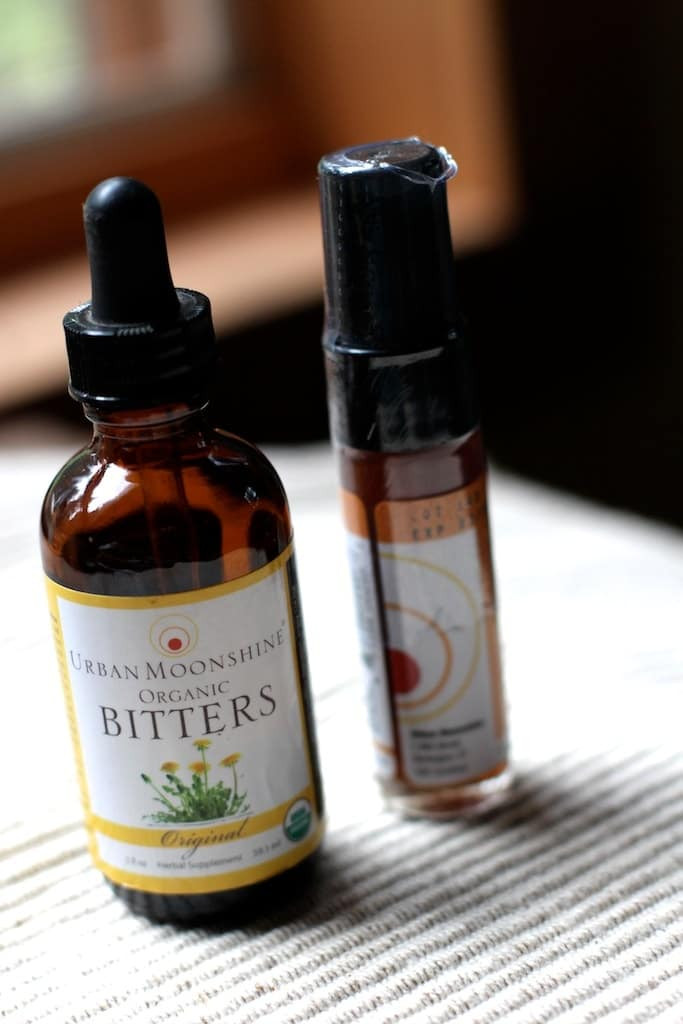 Bitters formula for digestion in a brown glass bottle
Bitters formula for digestion in a brown glass bottle
When traveling to destinations like Mexico, where parasites are a greater concern, I also include activated charcoal capsules in my kit for added support.
Boosting Immune Health While Traveling
Travel can put a strain on your immune system, making you more vulnerable to upper respiratory infections like the common cold. Airports and train stations, being crowded environments, increase your exposure to viruses. To bolster my immunity while traveling, I always pack something to support my immune system, hoping to ward off any potential illnesses.
Elderberry extract is a fantastic natural remedy to prevent upper respiratory infections and reduce the duration of a cold if one does occur. It’s an essential addition to a proactive travel first aid kit.
Natural Pain Relief Options for Travelers
Musculoskeletal pain is a personal vulnerability of mine. An old injury from my teenage years can sometimes flare up, so pain relief is always a priority in my travel preparations. I never travel without my favorite pain remedies.
This “Pain in the…” tincture from Five Flavor Herbs is an exceptional herbal blend that addresses various types of pain, from headaches and menstrual cramps to back pain. It’s a must-have in my herbal travel kit, no matter the destination.
Another pain remedy I appreciate are Wu Yang patches, Chinese medicated patches. These patches contain a blend of herbs, including wintergreen, known for its pain-relieving properties, especially for musculoskeletal discomfort.
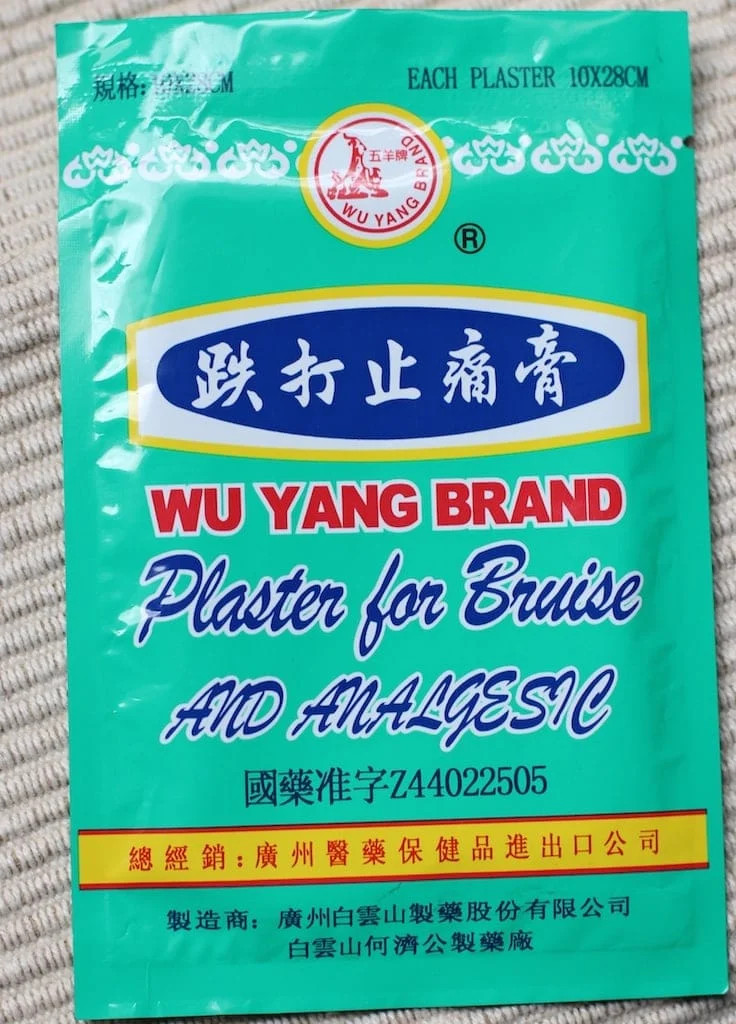 Wu Yang pain relief patches in packaging
Wu Yang pain relief patches in packaging
You simply cut a piece of the patch, remove the backing, and apply it to the painful area. During my trip to France, I shared these patches generously with people experiencing various pains, and everyone was impressed by their effectiveness in reducing discomfort. These patches are a unique and helpful addition to a travel first aid kit.
Ginger Drops: A Versatile Travel Companion
Candied ginger is an excellent addition to your travel first aid kit due to its wide range of benefits. It’s effective for general nausea, which is particularly helpful for motion sickness. Ginger can also soothe a sore throat and aid in easing general digestive upsets. Plus, they taste delicious!
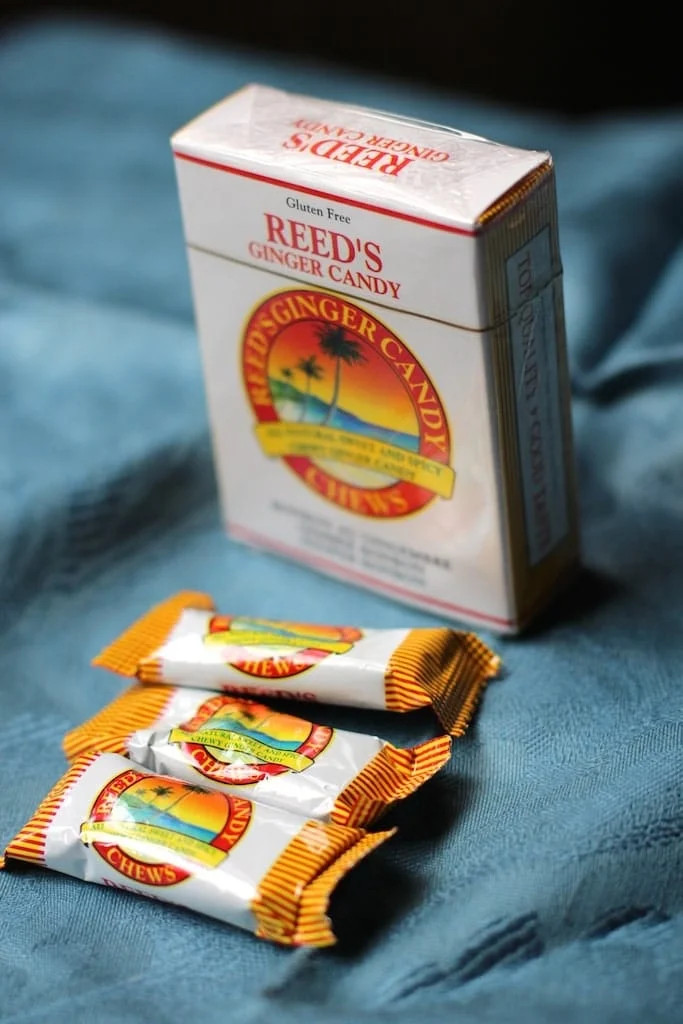 Candied ginger drops in a clear plastic bag
Candied ginger drops in a clear plastic bag
Lavender Essential Oil: Multi-Purpose in a Bottle
Lavender essential oil is incredibly versatile for your travel first aid kit. Topically, it can be used for bug bites, headaches, cold sores, and minor burns. Inhaling the scent of lavender promotes relaxation, which is incredibly useful when travel stress gets overwhelming.
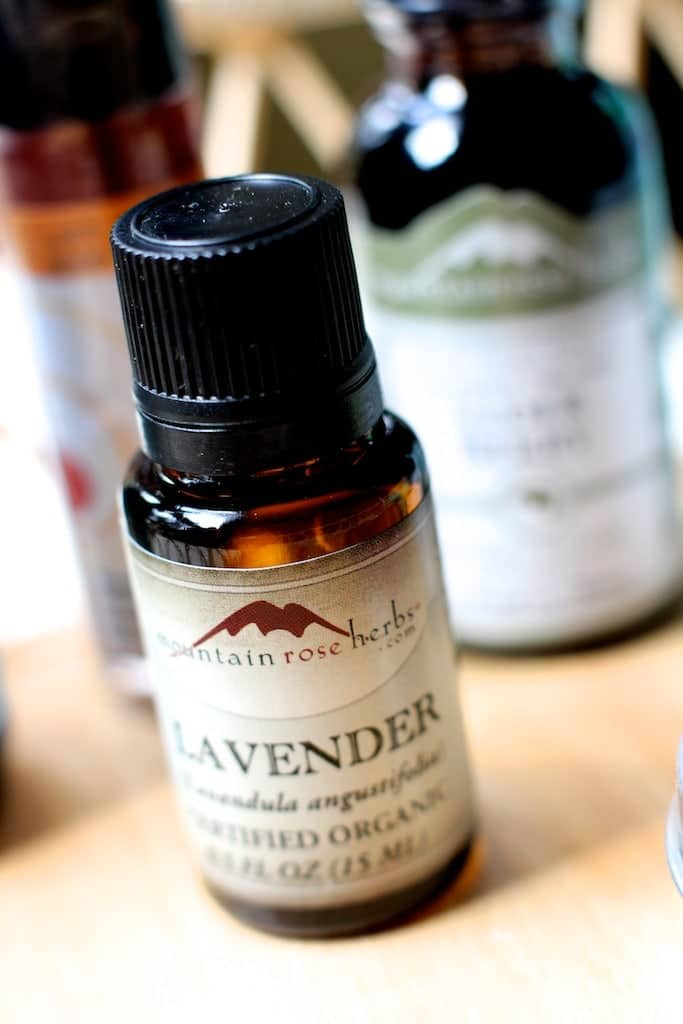 Lavender essential oil in a small purple glass bottle
Lavender essential oil in a small purple glass bottle
Chamomile and Peppermint Tea: Soothing Teas for Travel
I always include a few bags of chamomile and peppermint tea in my herbal travel first aid kit. Both are excellent for calming upset stomachs. Chamomile is also known for its nerve-soothing properties. Once, while traveling to an herb conference, I woke up with a red, irritated eye, likely pink eye. A poultice made from a chamomile tea bag quickly cleared it up.
Peppermint tea is another beneficial tea to have in your kit. It tastes refreshing and is effective for stomach upset and nausea.
Staying Hydrated on the Go
To combat dehydration, I also pack several packets of Emergen-C in my first aid kit. Mixed with water, these packets help rehydrate you, particularly useful during travel when dehydration can easily occur.
Expanding Your Travel Kit: Additional Herbal Ideas
The items I’ve discussed provide a solid foundation for your herbal travel first aid kit. Remember to customize your kit based on your destination and travel style, considering weight and space limitations. If you travel infrequently or don’t use your kit often, it’s a good practice to refresh it annually to ensure the potency and freshness of your salves and teas.
Other valuable additions to consider for your first aid kit:
- Yunnan Baiyao Powder: While harder to find now, this is a renowned herbal powder for stopping bleeding.
- Antimicrobial Tincture Blend: Useful diluted to clean wounds or for urinary tract infections. Echinacea and yarrow are excellent choices.
- No Jet-Lag Homeopathics: I used these on my trips to and from France and experienced minimal jet lag on arrival and no perceived symptoms upon returning home. I’m a firm believer in their effectiveness!
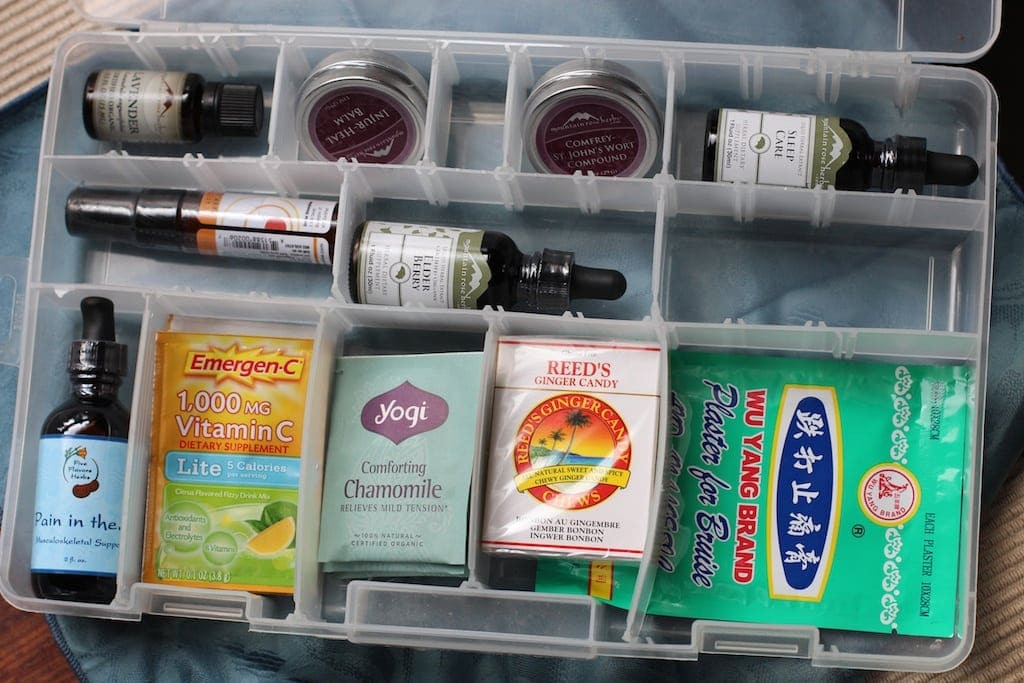 No Jet-Lag Homeopathic remedy packaging
No Jet-Lag Homeopathic remedy packaging
Assembling Your Kit: Practical Tips
A helpful tip I learned from herbalist Natalie Vickery is to use fish tackle boxes as containers for your herbal first aid kit. These boxes, easily found at hardware or sporting goods stores, are ideal for organizing and protecting tincture bottles in individual compartments. I’ve been using a fishing tackle box for years, and it works wonderfully.
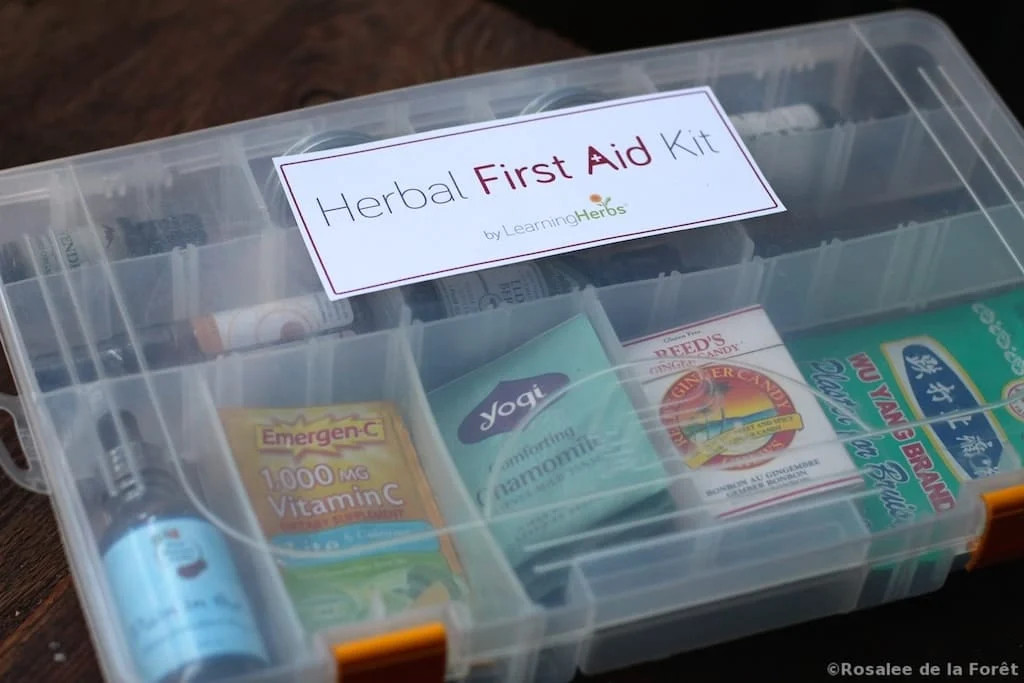 Fishing tackle box used as an herbal first aid kit organizer
Fishing tackle box used as an herbal first aid kit organizer
Often, herbal remedies are things you can prepare yourself. While this article focuses on the contents of my personal first aid kit and provides guidance for creating your own, remember that it’s specifically about an herbal first aid kit. It doesn’t cover standard first aid items. It’s crucial to also carry a basic first aid kit with essentials like gauze, iodine, waterproof bandages, triangular bandages, non-stick pads, adhesive bandages, and tape. These are readily available as pre-made kits in sporting goods and hardware stores.
For many of the supplies mentioned, visit Mountain Rose Herbs.
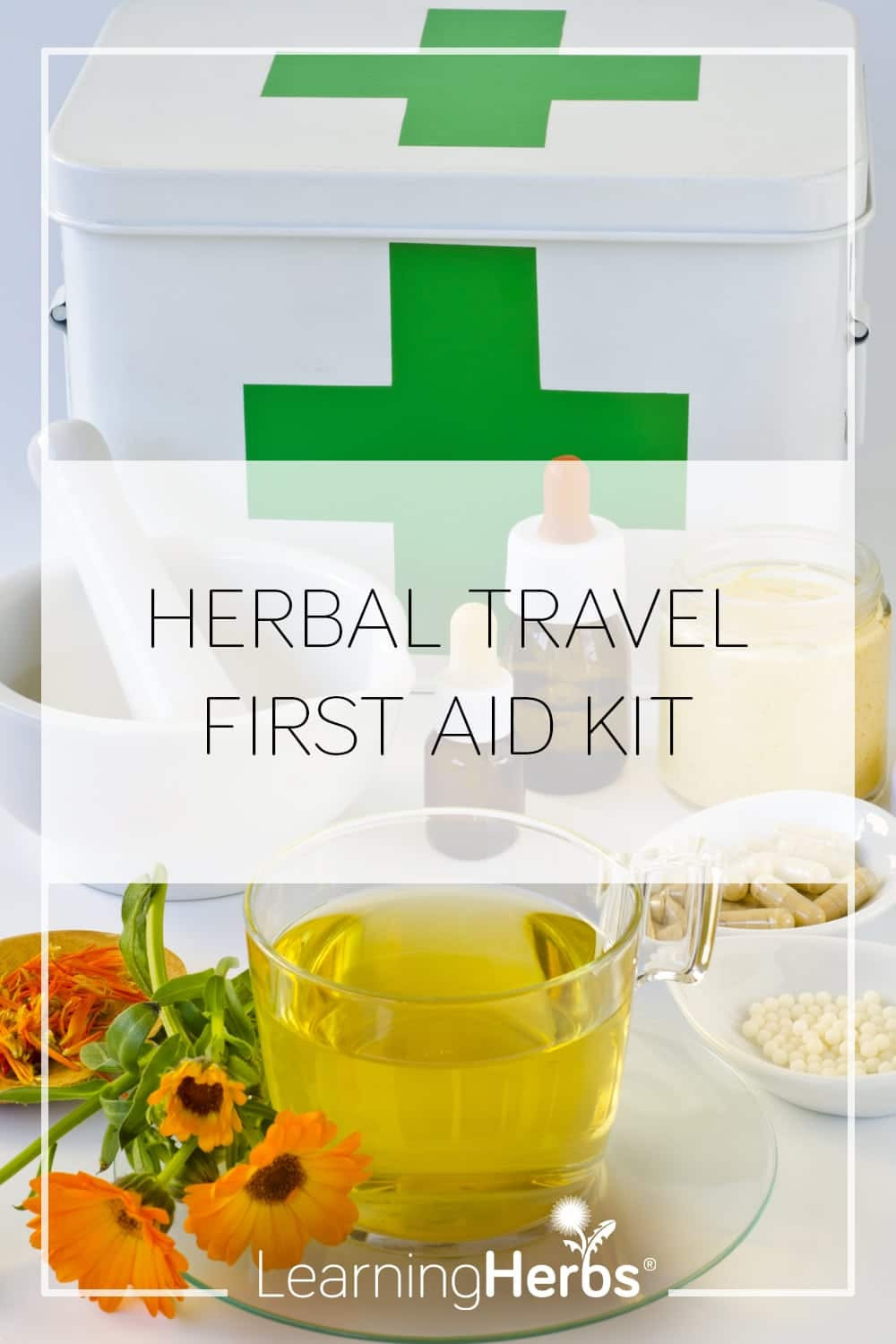 Mountain Rose Herbs logo
Mountain Rose Herbs logo
Written by Rosalee de la Forêt
Rosalee de la Forêt is a registered herbalist with the American Herbalists Guild, bestselling author of Alchemy of Herbs: Transform Everyday Ingredients Into Foods & Remedies That Heal, and co-author of Wild Remedies: How to Forage Healing Foods and Craft Your Own Herbal Medicine. Explore more on Rosalee’s website and podcast. All content and photos in this article are © Rosalee de la Forêt.
